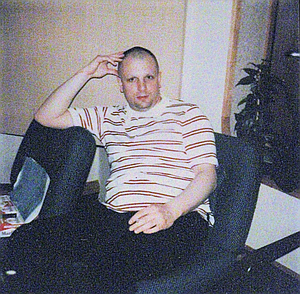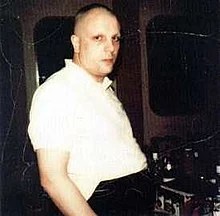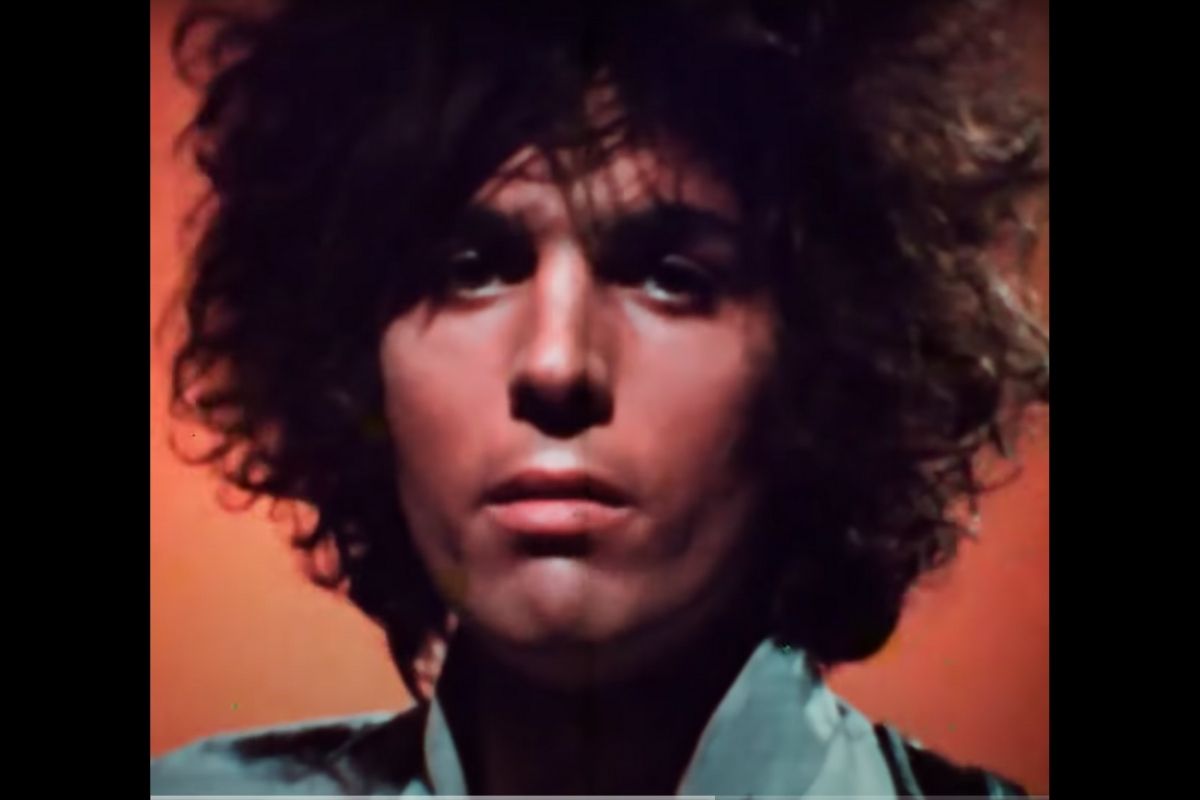By the time Syd Barrett died in 2006, he’d been living in anonymity for decades. Hearing of his death, the other members of Pink Floyd released a group statement: “Syd was the guiding light of the early band lineup and leaves a legacy which continues to inspire.” Indeed, there’s no question that Barrett was the initial creative force behind Pink Floyd’s unique ’60s sound. He was the band’s original frontman and songwriter — its pioneering spirit.
Videos by Rare
Yet Barrett was forcibly ousted from Pink Floyd in 1968. He was excluded from their international meteoric rise and played no part in famous albums like The Dark Side of the Moon, Wish You Were Here, and The Wall.
Why? What went wrong for the Pink Floyd visionary?
The Early Life of Syd Barrett
Roger Keith Barrett was born in 1946 to a middle-class family in Cambridge, England. He picked up the nickname Syd as a teen, drawing from a local jazz legend called Sid “The Beat” Barrett.
Barrett was always interested in music. By the time he was 16, he played casually in bands with childhood friends. But then tragedy struck: Barret’s father died of cancer just before his 16th birthday.
Barrett was devastated, but his mother encouraged him to keep at music, even as he began a career in fine art.
In 1962, Barrett enrolled as an art student at the Cambridgeshire College of Arts and Technology where he met the future Pink Floyd guitarist David Gilmour. Around the same time, Barrett — like just about everyone else in the ’60s — was moved by the work of the Beatles, the Rolling Stones, and Bob Dylan. He started to write new songs of his own. However, his focus remained on visual art and in 1964, Barrett left for the Camberwell College of Arts in London to study painting.
It was there that Barrett reunited with future Pink Floyd co-founder Roger Waters, an old acquaintance of his from Cambridge. He began playing in Waters’ band called the Tea Set, alongside two more future Pink Floyd collaborators: drummer Nick Mason and keyboardist Richard Wright. Mason wrote about meeting Barrett in his 2004 memoir, Inside Out: A Personal History of Pink Floyd:
“In a period when everyone was being cool in a very adolescent, self-conscious way, Syd was unfashionably outgoing; my enduring memory of our first encounter is the fact that he bothered to come up and introduce himself to me.”
As other bandmates drifted in and out of the Tea Set, Barrett became the band’s official frontman. He decided to change the name of the Tea Set — to Pink Floyd. Similar to Syd’s own nickname, the moniker was inspired by the blues musicians Pink Anderson and Floyd Council. And with that shift,
Barret began spearheading Pink Floyd’s a new, increasingly experimental repertoire.
In the Barrett biography Saucerful of Secrets, Nicholas Schaffner writes that their public performances during that period were marked by Barrett’s “leaping around,” “madness,” and “improvisation.”
Making a name for themselves around London, Pink Floyd signed with EMI in 1967 and received a whopping advance for their first single, “Arnold Layne.” The narrative song tells the story of a cross-dresser, sung through Barrett’s highly discernible British accent. However, the controversial subject matter was boycotted by several radio stations.
It was their second single, “See Emily Play,” which would gain larger recognition. It peaked at No. 6 in the UK the same year.
“See Emily Play”
Syd Barrett’s Drug Use
Both “Arnold Layne” and “See Emily Play” were an appropriately trippy introduction to Pink Floyd’s early discography. Their debut album, The Piper at the Gates of Dawn, was characterized by colorful, literary lyrics infused with wordplay — mostly coming from Syd Barrett. These goofy lines were backed by free-form instrumentation and overall sonic distortion: dissonance, echo, and other innovative studio effects. The nearly 10-minute instrumental behemoth, “Interstellar Overdrive,” fully embodies the band’s edgy techniques.
Like most of his contemporaries, though, Barrett’s inventive methods were driven by his experiences on LSD and other psychedelics. The influence of drugs feels front and center on those preliminary tracks. And while Barrett’s acid-laced adventures certainly led to some creative bursts, it wasn’t long before the artsy devotion became a dependence that crippled Barrett’s ability to communicate and perform with the band.
Over the next two years, Barrett became erratic to the point of despondence. The once joyful extrovert was now depressed and withdrawn as he suffered the various effects of heavy drug use: flashback hallucinations, messy speech, mood swings, missing memories, and even full-on catatonia. Barrett developed a blank, dead-eyed stare that troubled his friends. Often, he often did not recognize his bandmates or even seem to know where he was.
Once, while performing “Interstellar Overdrive” in San Francisco, Barrett slowly detuned his guitar on-stage. The audience went wild for the apparent stunt, but of course, Barrett’s bandmates knew something was wrong. The different members of Pink Floyd still maintain their own theories.
“Diagnosing Syd”
Roger Waters contends, undoubtedly, that Syd Barrett was schizophrenic. However, Rick Wright, who lived with Barrett at the time, insists that a massive acid overdose is what triggered the sudden onslaught of problems. David Gilmour, Barrett’s friend who eventually replaced him as lead guitarist, told The Independent: “In my opinion, his nervous breakdown would have happened anyway. It was a deep-rooted thing. But I’ll say the psychedelic experience might well have acted as a catalyst. Still, I just don’t think he could deal with the vision of success and all the things that went with it.”
So was it drugs, disease, or emotional turmoil? Fans still wonder. Barrett’s sister Rosemary Breen has publicly addressed the speculation, saying that while Barrett might have been “on the spectrum,” he did not suffer from any mental illness that necessitated treatment. Though her brother spent time in psychiatric hospitals, medication and therapy were not prescribed. Then again, mental health awareness and treatment were not as advanced when Barrett first lost his grip on reality.
With little available treatment, the rocker’s condition worsened and he was unable to contribute much to Pink Floyd’s second album. Barrett’s only song on A Saucerful of Secrets was “Jugband Blues.”
‘Wish You Were Here’
With Syd Barrett’s departure from Pink Floyd, bassist Roger Waters became the de-facto frontman. Their friend David Gilmour was added on guitar. Years passed, and the Pink Floyd sound matured. Moving away from the deeply psychedelic rock which Barrett had championed, Pink Floyd gained an international audience in 1973 with a poetic concept album: The Dark Side of the Moon.
Coming off that newfound fame, Pink Floyd returned to the studio in 1975 to record Wish You Were Here, the understated — and underrated — follow-up record. During one of those recording sessions, a mysterious man showed up at the Abbey Road studio in London. The band described the run-in, in detail, in the documentary, The Story of Wish you Were Here. Watch that clip above.
It was a summer day in 1975. Pink Floyd was laying down the final mix for “Shine On You Crazy Diamond.” This epic, nine-part suite is woven throughout Wish You Were Here and was dedicated to none other than Syd Barrett, their old friend. And by complete coincidence, Barrett showed up to the studio that day. He appeared overweight and was wearing a raincoat. Nobody recognized him at first.

Barrett’s appearance at Abbey Road both cemented his place as a Pink Floyd outsider and served as further inspiration to his former bandmates. His mental decline had already driven the lunacy lurking within The Dark Side of the Moon. And from that moment on, Wish You Were Here was planned as the more official tribute. Barrett’s striking, hairless look also inspired the manic shaving scene in The Wall movie.
Syd Barrett, Post-Pink Floyd

After Syd Barrett’s unpredictable behavior pushed him away from Pink Floyd, he embarked on a brief solo career. He released the single “Octopus” in 1969. In 1970, he released two solo albums: The Madcap Laughs and Barrett, which included the memorable track “Gigolo Aunt.”
But in 1972, Barrett retired from public life for good. He lived privately in his hometown of Cambridge, England where he continued to paint. He also loved to garden.
In 1988, EMI released Opel, a studio album comprised of Barrett’s unreleased tracks and outtakes which would be his final contribution to the music industry. In 2006, Barrett died of pancreatic cancer. He was just 60 years old.
Today, he would have turned 77. Shine on, you crazy diamond.
Editor’s Note: A previous version of this article was first published on January 25, 2021.



